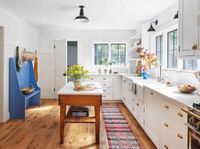In early April 2025, the National Association of REALTORS® unveiled its 2025 Home Buyers and Sellers Generational Trends Report, shedding light on the evolving dynamics of the housing market. This comprehensive report reveals significant insights into the behaviors and characteristics of various generations participating in home buying and selling.
Among the most striking findings is the dominance of Baby Boomers, those aged 60 to 78, who represent a staggering 42% of home buyers and 53% of home sellers. This generation is motivated by a desire to be closer to family and friends and to meet their retirement needs. Many Baby Boomers have remained in their homes for extended periods, allowing them to build substantial equity, particularly through home appreciation. This financial advantage has enabled a growing number of them to make all-cash purchases, making them less vulnerable to the current elevated mortgage rates. As a result, Baby Boomers are significantly shaping the housing market landscape.
However, the report also highlights a troubling trend: the share of first-time home buyers has plummeted to a historic low of 24%, the lowest since the report's inception in 1981. This marks a significant decline from 32% just a year prior. Younger millennials, aged 26 to 34, represent the highest share of first-time home buyers at 71%. The rising home prices and mortgage rates are particularly challenging for this group, pushing the median age of first-time buyers up to 38 years, an increase from 35 years last year. Compounding this issue is the growing prevalence of all-cash buyers, now accounting for 26% of transactions, which places first-time buyers at a competitive disadvantage.
Moreover, the report reveals that older buyers are increasingly less likely to finance their purchases. While 74% of home buyers relied on financing, a record-high 26% paid cash for their homes. The reliance on financing decreases as the buyer's age increases. Younger buyers often depend on savings for their down payments, while older buyers typically use the proceeds from selling their previous residences. Notably, 33% of younger millennials received down payment assistance from friends or relatives, illustrating the generational wealth disparities that influence home buying.
Despite the challenges faced by first-time buyers, the report underscores the continued importance of real estate agents in the home buying and selling process. A remarkable 88% of buyers purchased their homes through a real estate agent or broker, with younger millennials utilizing these services the most at 91%, followed closely by older millennials at 90%. Buyers rely on agents for assistance in finding the right home and negotiating purchase terms, while sellers depend on them to price their homes competitively, market effectively, and sell within a specific timeframe.
In a related trend, the world of home design is evolving, with a noticeable shift towards personalization and unique details. According to industry experts, 2025 is all about adding personality to home design through creative or custom knobs and pulls. Miranda Cullen, owner of Inside Stories, emphasizes that hardware plays a significant role in enhancing cabinetry, offering impactful design elements that reflect individual style.
As homeowners embrace this trend, funky shapes and textures are expected to flourish. Katie Schroder, founder of Atelier Interior Design, notes a growing interest in unique materials such as marble and wood, along with bold, angular shapes and organic textures. This shift signifies a departure from traditional styles in favor of more expressive, personalized details.
Additionally, statement pieces are making a comeback, with an artisan-crafted feel becoming increasingly popular. From oversized pulls and faceted crystal knobs to geometric stone designs and nature-inspired styles, the hardware market is diversifying to meet homeowners' desires for distinctive designs.
Warm metals like aged brass and copper continue to shine, while cooler-toned finishes, such as chrome, are being paired with warm color palettes to create striking cabinet faces. Polished nickel remains a top choice for its versatile appeal, bridging traditional and modern styles.
Colorful powder-coated metal, wood, and stone are also gaining traction, encouraging homeowners to explore bolder, more colorful hardware options. Hues like olive green, snow white, royal purple, rose red, and sunflower yellow are making waves, transforming spaces into vibrant showcases of personality.
Another notable trend is the rise of living finishes, including unlacquered brass, copper, and bronze. These materials evolve over time, developing a natural patina that adds character and uniqueness to each piece. Smart hardware is also on the rise, with motion-activated pulls, voice-controlled locks, and fingerprint-resistant finishes gaining popularity.
As the year progresses, the trend of color drenching is emerging as a significant design movement, moving away from minimalism and neutral interiors toward more vibrant, personalized spaces. Tiffany Gowler, co-founder of Gowler Homes, explains that color drenching simplifies the design process by saturating a room in a single hue, creating a polished and cohesive look.
This bold design technique minimizes visual distractions and creates the illusion of larger spaces. By painting every surface—walls, trim, ceiling, and even cabinetry—in the same color, homeowners can achieve a seamless, cocoon-like effect that adds depth without overwhelming the space.
Color drenching is particularly effective in small areas, such as powder rooms and hallways, where it can enhance the sense of purpose and cohesiveness. Additionally, it can highlight architectural details in older homes, blurring lines and creating a unified aesthetic.
As homeowners continue to seek ways to personalize their spaces, the trends in home buying, selling, and design reflect a broader desire for comfort, individuality, and functionality. With Baby Boomers leading the charge in the housing market and innovative design trends emerging, the landscape of homeownership is evolving in exciting ways.







